
Looking Back with Hayabusa2 Spokesperson on the Six-Year Journey

Looking Back with Hayabusa2 Spokesperson on the Six-Year Journey
YOSHIKAWA Makoto and KUBOTA Takashi of JAXA's Institute of Space and Astronautical Science (ISAS), who served as spokesperson for Asteroid Explorer "Hayabusa2."
We asked them to look back on the process of developing Hayabusa2 into a national project, while demonstrating their abilities in their respective fields of science and engineering.
―The "Hayabusa2" project has already yielded a variety of new insights, but first, could you tell us, Dr. Yoshikawa, about some of the discoveries that have been highlights in your field of science?
Yoshikawa
Full-scale analysis of the samples brought back by "Hayabusa2" is scheduled to start around June this year, and that will be the start of a major phase, but the biggest surprise at the moment is the physical properties of the surface of asteroid Ryugu. When we hit Ryugu with an impactor to create an artificial crater, we found out that the surface was not hard. The surface strength was very small. We also did a detailed study of the spectrum of the surface material, and found that it is highly possible that Ryugu was once very close to the sun. We have been able to guess about the evolution of Ryugu to some extent. Small dusts gather to form a celestial body. The larger the body, the harder the material becomes because of gravity. The material in Ryugu appeared to be the dust that had gathered in space 4.6 billion years ago, which is the stage before it became hard rock. It's thought that if this were to fall to Earth as a meteorite, it would all burn up, and it may be a material that we have never studied before.
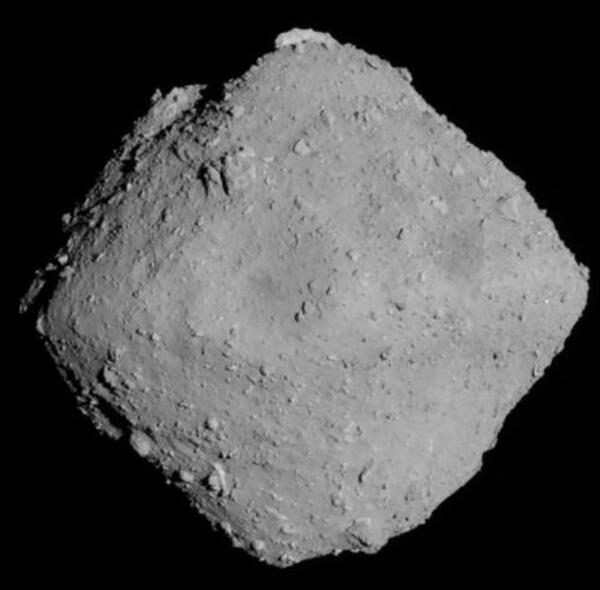
©JAXA, University of Tokyo, Kochi University, Rikkyo University, Nagoya University, Chiba Institute of Technology, Meiji University, Aizu University, AIST
―What about the field of engineering, Dr. Kubota?
Kubota
As for engineering technology, I would like to mention two points. Following the first "Hayabusa," "Hayabusa2" achieved the second asteroid sample return. Technology is not something that can be established in one attempt, but rather established by the second and third attempt. The mission was successful for the second time, which further improved our technology for deep space exploration farther than the moon. This is the first point that I want to mention. The other point is that technology has to progress. "Hayabusa2" succeeded in a pinpoint landing and created an artificial crater using an impactor to collect materials inside. We also achieved a surface movement exploration with the small planetary exploration rover MINERVA-II. Mastering a major exploration technique and accomplishing a challenge that will lead to the next are the major engineering achievements.
Space exploration projects are for
the shared knowledge of mankind.
―Dr. Yoshikawa and Dr. Kubota served as the spokespersons for "Hayabusa2." What did you focus on in terms of "publicity"?
Yoshikawa
In terms of how we got everyone involved, we put a lot of effort into getting the word out as quickly as possible. We focused on real time information. We showed actual operations almost live many times. We also broadcasted the touchdown, the impactor, and return to Earth on YouTube. By sending out messages on Twitter, we wanted to create an atmosphere as if viewers themselves are at the scene of the mission. We wanted people to feel close to the mission that was being carried out 300 million km away.
Kubota
People used to cast a stern eye toward space exploration. This is because, although it has a dream, missions were difficult to understand and sometimes did not go well. Despite considerable amount of budget spent for space exploration, it was difficult for people to see what kind of results were achieved. I tried to make everyone understand what a mission is for, how and what we are trying to do, what is difficult about it and why, etc. For actual briefing meetings, I devised materials, used videos to explain, and used models to show how it works. Many people now pay attention to our missions with some saying that they were inspired. I believe that the young generation has become interested in space exploration, which will lead to the development of human resources. After "Hayabusa2," Japan's space exploration will move forward with "SLIM," which will attempt a pinpoint landing on the moon, and "MMX," which will attempt to return samples from two Martian moons. Japan will participate in the U.S. Artemis Program, which is a human lunar exploration. This is because Japan's technologies are recognized. I have high hopes for the next generation.
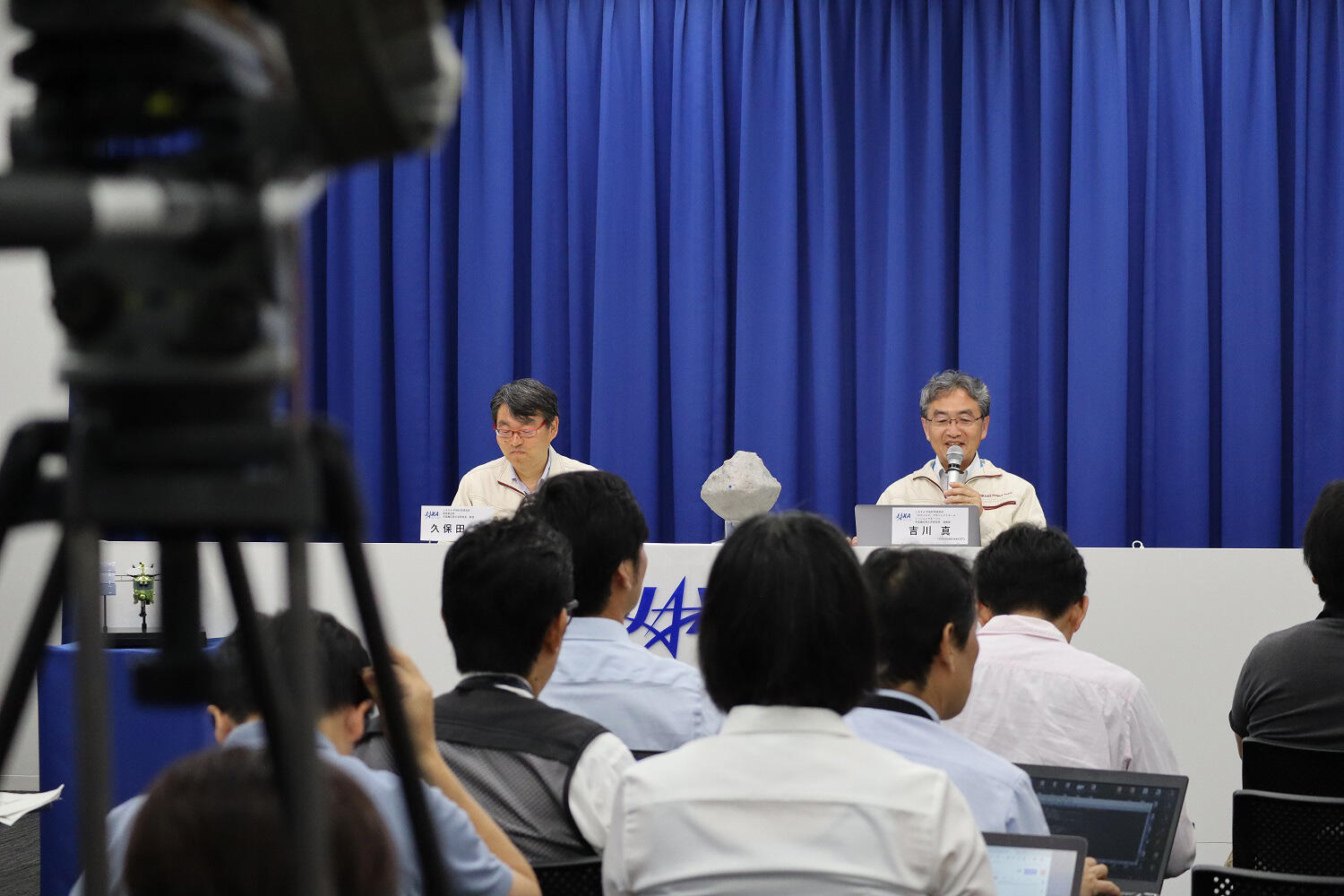
―I guess you are trying to say that rather than looking at space exploration as something that would be immediately useful, you were able to convey the importance of approaching the mystery of the beginning of life as a shared knowledge for all humanity.
Yoshikawa
The main theme is to properly understand our planet Earth and life. Some ask us "What's the point of knowing that? We reply that knowing the begging of the Earth and ourselves is something that can be only done by mankind who are intelligent. Doing that is evidence that we are human being.
Kubota
The first mission of "Hayabusa" was to explore Itokawa, an S-type asteroid (thought to be a rocky, containing little organic matter or water). It was a search for the origin of planet. As Ryugu explored by "Hayabusa2" is a C-type asteroid, which is thought to contain rich carbon and organic materials that may be the source of the materials that make up our bodies, our catchphrase "Where do we come from, who are we, where are we going?" seems to have been well accepted. It was a quote from the painting by artist Gauguin.
―Can space exploration be for the purpose of a grand goal, and at the same time can it be useful in a concrete way?
Yoshikawa
For example, there is a concept called planetary defense, which is to prevent asteroids from hitting the Earth in advance. There's a lot of international activities. In order to prevent celestial collisions with the Earth, we first need to know what we're dealing with. In movies, they blow up a celestial body, but that would mean that all the debris would fall to the Earth (laugh). What we can technically do now is to have a few probes collide with a celestial body to slightly change its orbit. But the conditions to do that are limited: The size of the target celestial body is less than 200 to 300 meters; and only when the anticipated collision will take place 10 to 20 years or later. If we can have probes collide with a target celestial body, we can change its orbit so that it will pass right by the Earth in 20 years. Under these limited conditions, we have the technology to avoid a celestial collision.
Kubota
We have the technology that enables a landing on an asteroid 300 million kilometers away from the Earth with a high accuracy (about 1 meter margin of error). This can be utilized for landing at a target location in a future lunar exploration. It is also expected that the technology is applied to works on the ground such as logistics and disaster relieve by drones. In space, small size, light weight and low power consumption are very important. I think the three factors will be useful in many fields on the ground as well. Ion engine is difficult to launch on Earth because of their low thrust. As the engine emits very small particles at high speed, I think it could be useful for something. In fact, we worked with a company to develop the microwave plasma discharge treatment system for high-performance film materials. In this way, we expect that the technologies acquired by "Hayabusa2" will be applied to various fields on the ground.

There are ideas
that arise because resources are limited.
―"Hayabusa2" is full of technological advances as well as brilliant ideas. How did you come up with these ideas and how did you make them happen?
Yoshikawa
The "Hayabusa2" project was originally proposed because there was a possibility that the first spacecraft would not have collected any samples and that it might not be able to return to Earth in the first place. At first, they asked us if we were going to do the same thing (laugh). Next, we proposed that two explorers would be launched at the same time by a single rocket, one of which would be "Hayabusa2," and the other would arrive after a time delay and collide with an asteroid, which is a planetary defense mission. The idea was rejected because it would cost too much. After the proposal was rejected, we came up with an idea of checking underground materials. For this purpose, we came up with various ideas, such as building a mole-like robot or piercing a penetrator (a spear-shaped observation device that impacts and penetrates the surface of a celestial body). Finally we ended up with an idea of creating a crater with an impactor.
Kubota
Normally, we tend to obtain inner materials by first landing on an asteroid surface and digging a hole. But in a place with low gravity, the recoil of digging will cause the device to move and fall, and the surface temperature of an asteroid is too high to stay for a long time. The best way to bring subsurface material to the surface without changing the touchdown sampling method of "Hayabusa2" was to have an impactor hit the surface. However, when an impactor hits the surface, various things would fly off the surface. The biggest challenge was how we can prevent such flied-off things from affecting the mission and we carefully thought about it. As resources were limited, we put our heads together to figure out the most reliable way to do that, which led to the success of the project.
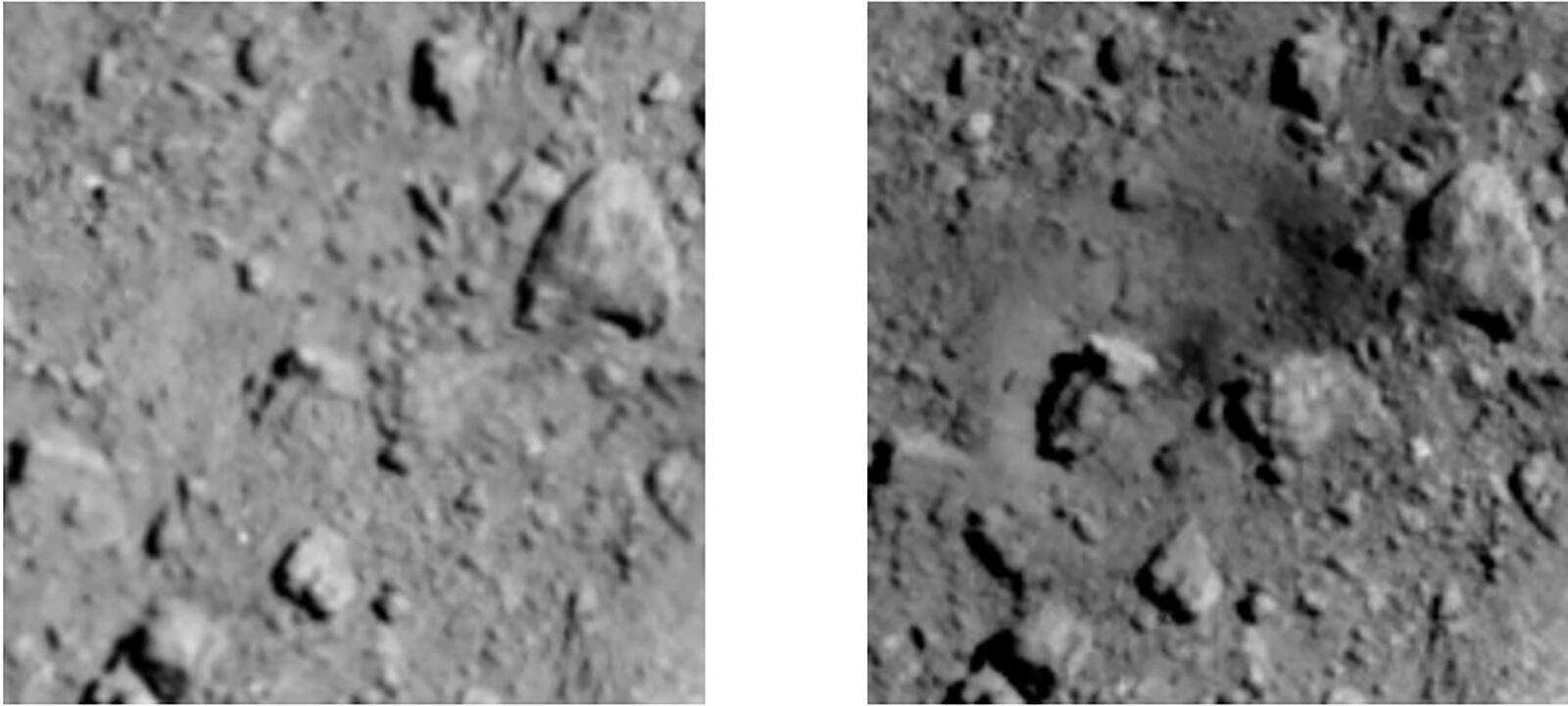
©JAXA, University of Tokyo, Kochi University, Rikkyo University, Nagoya University, Chiba Institute of Technology, Meiji University, Aizu University, AIST
―Did you go through similar twists and turns in the development of the asteroid small exploration rover MINERVA-II?
Kubota
If "Hayabusa2" is going to Ryugu, I wanted to land something on the asteroid to explore the surface. What can we do with the limited weight? We thought that if we could take pictures and measure temperature, that could contribute to science. In order to observe many different areas, we really wanted to achieve surface movement. We thought it would be difficult to run on wheels in a microgravity environment like an asteroid, so we came up with a hopping mechanism. However, if hopping velocity is so big, a rover would leave Ryugu and not be able to return. This is a question that may occur on an asteroid we have never been. How did we solve the issue? This was the idea of a graduate student, which made it possible to change the speed of hopping by the number of rotations (torque) of the motor. Communication could not be done directly from Earth. We decided to do it via "Hayabusa2," but there would be a delay of about 30 minutes for round trip. If we couldn't give them real-time instructions from Earth, we made them into an artificially intelligent robot that could make their own decisions and move according to the environment. The rovers wake up in the morning, be active in the morning, take a "nap" during the hot daytime, be active in the evening again, and rest at night. The rovers send only the clear images to Earth. We thought about how we could do something interesting and useful with limited weight and power. The software can also be rewritten. Maybe the rovers are still active, waiting for a signal from "Hayabusa2" (laugh).
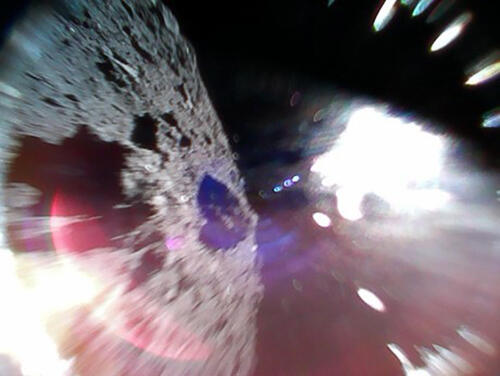
―Scientists share the same idea of doing something interesting.
Kubota
Yes, everyone is focused on maximizing results with limited resources, and they take everything into consideration. At first, there is a fight over how to divide the payload of the spacecraft on board. So each person in charge has a strong claim, but that does not work as we move forward with each phase, we start cooperating with each other to reduce weight and everyone forgets what happened in the past (laugh).This makes the teamwork significantly better all at once.
Yoshikawa
When it comes to friendly rivalry, the same applies to our relationship with the U.S. and Europe. In the U.S., OSIRIS-REx (a sample return mission from asteroid Bennu) is underway, and in Europe, Marco Polo (a sample return mission from asteroid Wilson-Harrington) was considered in cooperation with Japan. In planetary exploration, each country and region carries out its own mission. Of course, there is competition, but there is also cooperation, and we are constantly exchanging information. If the U.S. succeeds, that means samples are obtained from two locations, which will deepen research.
The OSIRIS-REx team is very envious of "Hayabusa2." This is because their mission is just to make observations and take samples. "Hayabusa2" has an impactor, and landed a total of four exploration rovers including MINERVA-II, and carried out two touchdowns. Japan's Hayabusa2 carried out much more than the U.S.'s OSIRIS-REx with a small explorer and small budget. They said, "We can't propose such many missions in the U.S."
Kubota
Both the U.S. and Europe place great importance on "certainty." As they have many opportunities and a large budget, they try to narrow down new challenges as much as possible and leave the remaining challenges to the next opportunity. But in Japan, we can only do it once every ten years or so (laugh). That's why we always try to think of ways to cram as many challenges as possible. For example, MINERVA-II weighs about 1 kg, while MASCOT, a small asteroid lander built by Germany and France, weighs about 10 kg. I believe that we can tackle more challenges in the future, but it is very important to make thorough preparations to do so. Of course, JAXA will not approve reckless missions. When resources are limited, people can come up with various ideas.
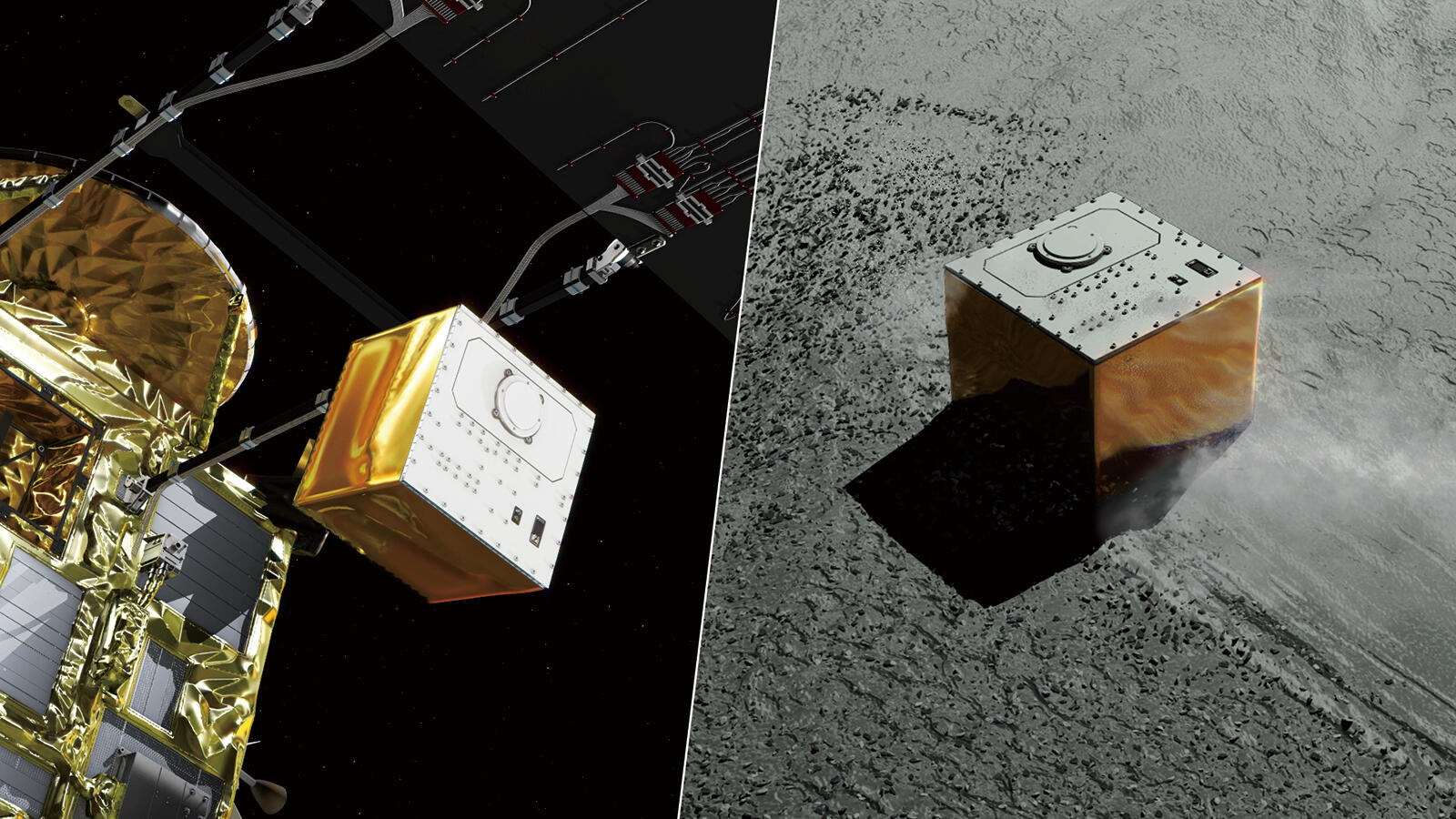
Nowadays, people say that young people don't have dreams, but I think it's a waste if they don't try because they are afraid of failure. Through "Hayabusa2," I wanted people to see the realization of dreams, desire to take on new challenges, and especially the passion of young researchers. I believe people also saw their distress in the broadcast. I hope people understand the importance of ways to confront difficult issues and take on a challenge with thorough preparation in advance. Even if they fail, I think they still can learn a lot from it. I believe that "Hayabusa2" is a uniquely Japanese project that involves small and medium-sized companies, local factory workers, and people who have never been involved in space before.
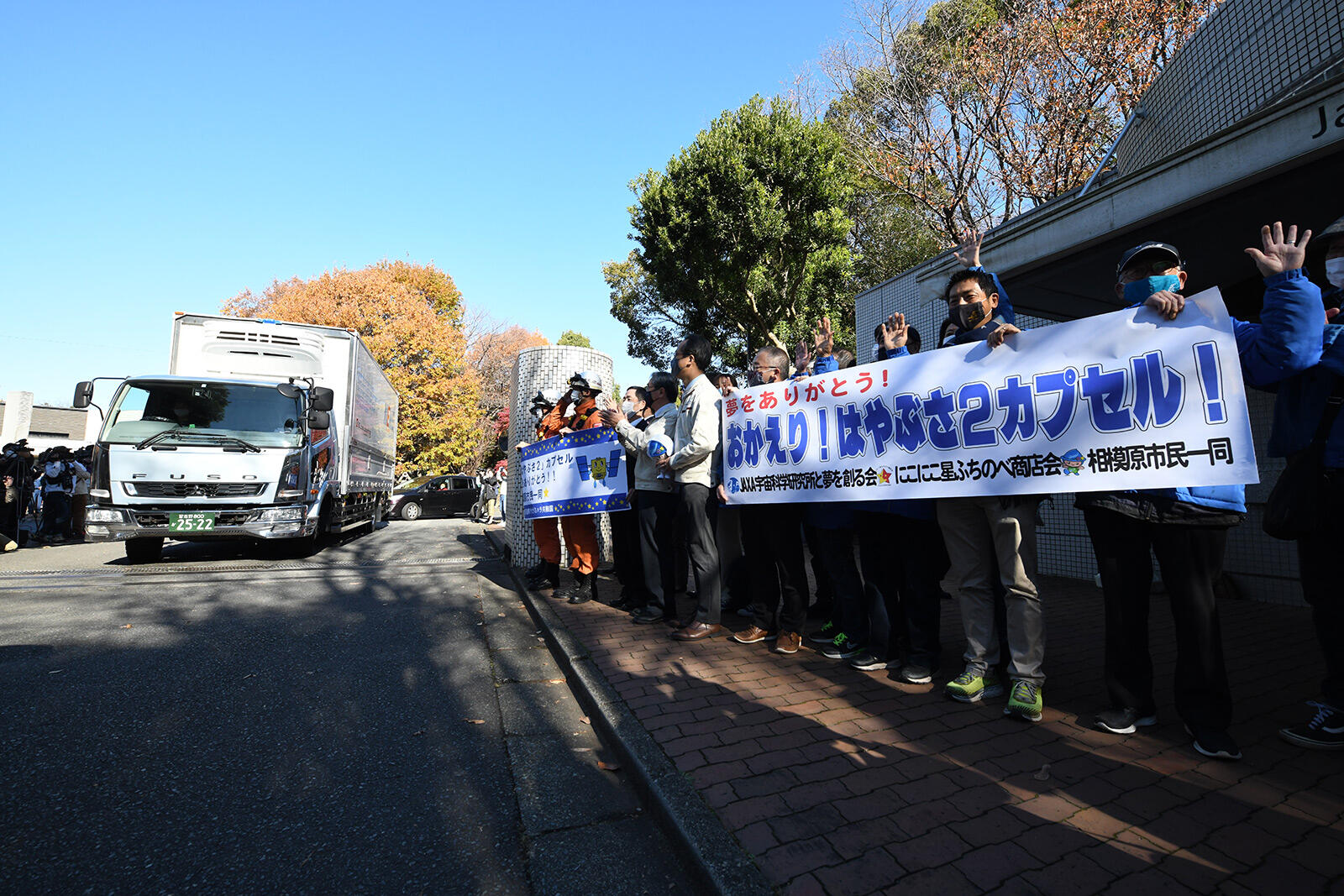
Profile
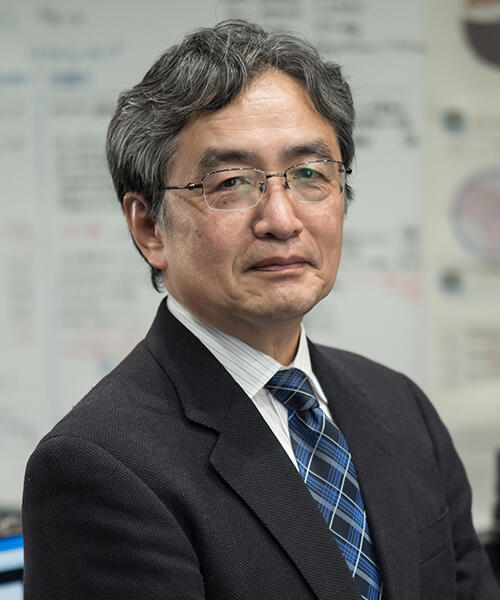
YOSHIKAWA Makoto
Associate Professor
Mission Manager of Hayabusa2
Department of Spacecraft Engineering
Institute of Space and Astronautical Science (ISAS)
Born in Tochigi Prefecture. Specialized in celestial mechanics; involved in asteroids for many years, including orbit calculation and exploration of small asteroids, and planetary defense. He likes mountain climbing, but can't go to mountains often these days. He is practicing flute and shakuhachi on his own.

KUBOTA Takashi
Professor
Department of Spacecraft Engineering
Institute of Space and Astronautical Science (ISAS)
Born in Saitama Prefecture. In charge of attitude control of M-V rocket and navigation guidance of "Hayabusa" and MINERVA. While researching smart robots that explore unknown environments, he is currently working as Chief Engineer to evaluate and promote JAXA projects. He likes to visit wineries, and recently enjoys watching plays and rakugo.
All the images are copyrighted ©JAXA unless otherwise noticed.
- Home>
- Global Activity>
- Public Relations>
- JAXA’s>
- JAXA's No.83>
- Looking Back with Hayabusa2 Spokesperson on the Six-Year Journey